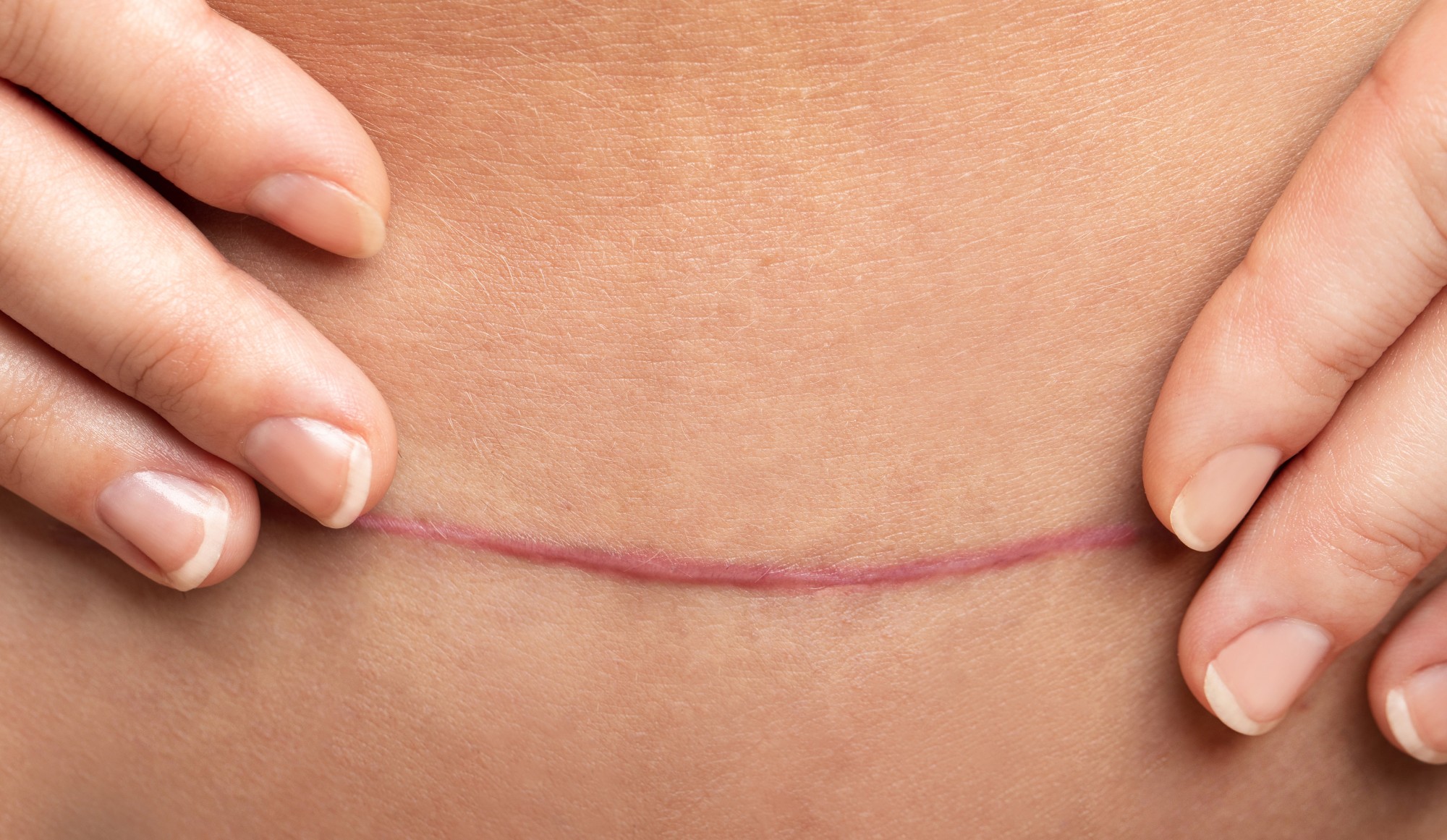What are scars?
Skin scarring occurs when the deeper layers of the skin, the dermis, are damaged and the body forms new collagen fibres to mend the damage, resulting in a scar. Scars can vary in shape, size, and colour, often becoming more noticeable than the original injury due to the skin’s inability to regenerate its original appearance.
Hypertrophic Scars
Hypertrophic scars are raised, red scars that form along the site of a wound, staying within the boundaries of the original injury. They arise due to an excessive production of collagen during the healing process, which leads to a thickened, often raised scar.
Hypertrophic scars typically develop after surgery or injury and can also result from burns or piercings. These scars can be itchy or painful, particularly in the early stages of formation.
Keloid Scars
Keloid scars are a more severe form of scar tissue that extends beyond the original injury site. These scars are characterised by their raised, often darkly pigmented or reddish appearance, and can continue to grow over time, unlike hypertrophic scars which tend to stabilise or regress.
Keloid formation is a result of an overly aggressive healing process, where an excessive amount of collagen is produced even after the wound has healed.
Key Differences Between Hypertrophic and Keloid Scars
Location and Spread
- Hypertrophic Scars: Remain confined to the original wound boundary.
- Keloid Scars: Extend beyond the original wound area, growing into surrounding healthy skin.
Timeframe for Development
- Hypertrophic Scars: Typically develop soon after wound healing and may improve or resolve within a year.
- Keloid Scars: May start to develop weeks to months after the injury and continue to grow over time without a tendency to regress.
Symptoms and Texture
- Hypertrophic Scars: Can be itchy or painful, especially in the early stages, but this often diminishes over time. They are firm and raised.
- Keloid Scars: These are often itchy, tender, or painful for a longer duration and can have a rubbery texture.
Treatment Options
Treating hypertrophic and keloid scars requires a multifaceted approach tailored to the individual’s scar characteristics, symptoms, and personal preferences.
Treatment aims to reduce scar size, alleviate symptoms like pain or itchiness, and improve cosmetic appearance.
Treatment Options
- Silicone Sheets and Gels: Widely used for both hypertrophic and keloid scars, silicone products can help flatten and soften scars when used consistently over several months.
- Corticosteroid Injections: These are commonly administered directly into the scar tissue to reduce inflammation, itching, and size. Multiple treatments are often necessary for optimal results.
- Pressure Therapy: Particularly effective for hypertrophic scars, especially after burn injuries, wearing pressure garments can help prevent excessive scar formation.
- Cryotherapy: Freezing therapy involves applying liquid nitrogen to the scar, useful primarily for smaller keloids, and may reduce scar size by damaging the excess scar tissue.
- Laser Therapy: Various lasers can be used to improve scar appearance by reducing redness, smoothing out the scar, and, in some cases, encouraging new, healthy skin growth.
- Radiation Therapy: Used sparingly due to potential side effects, radiation can be effective in preventing keloid recurrence after surgical removal, especially for very large or resistant keloids.

